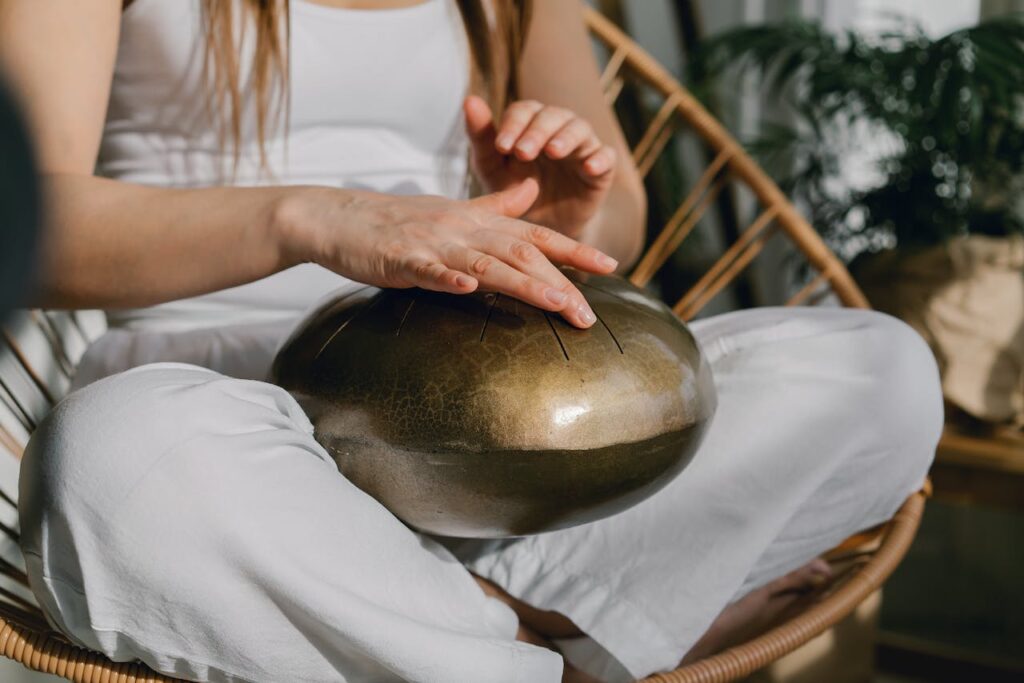Indigenous use of ayahuasca

By Temple of Umi

Table of Contents
Explore the traditional indigenous use of ayahuasca, understanding its cultural significance, and the challenges of preserving this ancient practice in the modern world.
Introduction
Ayahuasca, a potent and sacred brew, has its roots deeply embedded in the rich soils of Amazonian spiritual traditions. Originating from the indigenous tribes of the Amazon, this entheogenic concoction has been used for centuries, weaving a tapestry of spiritual enlightenment, healing, and community bonding. The indigenous use of ayahuasca is not just about consuming a psychoactive drink; it represents a profound journey into the self, guided by ancestral wisdom and rituals. As we explore this ancient practice, it’s paramount to approach with respect and an earnest desire to understand the depth of these indigenous traditions rather than merely seeking an exotic experience.
Historical Context and Significance
Origins of Ayahuasca Use Among Indigenous Communities
The indigenous use of ayahuasca dates back to ancient times, with evidence suggesting its use in ceremonial practices for at least a thousand years. Indigenous tribes across the Amazon basin have passed down the knowledge of ayahuasca through generations, embedding it as a cornerstone of their cultural and spiritual identity. This brew, made from the ayahuasca vine (Banisteriopsis caapi) and often combined with the leaves of the chacruna plant (Psychotria viridis), serves as a bridge to the spiritual world, offering healing and insights that are integral to the community’s fabric.
Spiritual and Cultural Significance of Ayahuasca in Traditional Ceremonies
For indigenous communities, ayahuasca is more than a substance; it is a sacred entity. The indigenous use of ayahuasca in rituals facilitates profound spiritual journeys. It is believed to connect individuals with the spirit realm, allowing them to communicate with ancestors, understand the deeper truths of existence, and find healing from physical and psychological ailments. These ceremonies, steeped in ritual and reverence, underscore the deep connection between the people, their environment, and the spiritual world. Learn more.
The Ritualistic Preparation and Consumption of Ayahuasca
The Sacred Process: Selecting and Preparing the Ayahuasca Vine and Other Ingredients
The preparation of ayahuasca is a meticulous process, handled with great care and respect. Indigenous shamans select the ayahuasca vine and chacruna leaves based on their knowledge of the plants’ spirits and healing properties. The ingredients are then cleaned and boiled for hours, sometimes days, to extract the potent brew. This process is often accompanied by prayers and chants, invoking the spirits to bless the ayahuasca, making the preparation phase as spiritually significant as the consumption itself.
Traditional Settings: The Ceremonial Space and Its Significance
The setting for the indigenous use of ayahuasca is carefully chosen to foster a safe and sacred environment. Ceremonies are typically held in a maloca (a communal house) or nature, surrounded by the Amazonian forest, which is considered a living entity that participates in the healing. The space is arranged to support the participants’ journey, often with the shaman or spiritual leader at the center, guiding the ceremony with songs, chants, and sometimes musical instruments like the ikaros.
Roles and Responsibilities: The Shaman or Spiritual Leader’s Role in Guiding the Experience
The shaman plays a pivotal role in the indigenous use of ayahuasca. With years, sometimes decades, of training and experience, the shaman guides participants through their ayahuasca journey, navigating the complexities of the spiritual realm. They use their knowledge to interpret visions, provide healing, and ensure the safety of all participants. Their presence is a reassuring anchor, offering support and understanding to those embarking on this profound spiritual journey.
Ayahuasca’s Spiritual and Healing Dimensions
Healing the Body and Soul: Stories of Transformation and Renewal
Ayahuasca, a brew with deep roots in the traditions of indigenous communities of the Amazon basin, has been central to stories of profound personal transformation and renewal. Individuals who have participated in ayahuasca ceremonies often report significant emotional, psychological, and even physical healing. These experiences include overcoming deep-seated traumas, battling addictions, and experiencing a rebirth of the self. According to participants’ testimonies, the main ingredient, a vine known scientifically as Banisteriopsis caapi, combined with other plants, typically Psychotria viridis, unlocks these transformative journeys.
- Personal narratives of overcoming depression and addiction through guided ceremonies
- Physical healing reported by participants, including improvements in chronic conditions, attributed to the purgative properties of ayahuasca
- Renewed life purpose and direction, as users reconnect with their inner selves and find new paths forward
Visions and Teachings: How Ayahuasca Facilitates Communication with the Spiritual World
Ayahuasca is not just a means to heal; it is also a bridge to the spiritual world. Many describe the visions induced by ayahuasca as direct communications with the realm beyond our ordinary experiences. Indigenous communities and shamans often interpret these visions as teachings or messages from the ancestors, spirit guides, or the natural world itself.
- Guided visions, often facilitated by the shaman or spiritual leader of the ceremony, lead to profound insights and wisdom.
- Spiritual encounters that provide guidance, comfort, and a sense of interconnectedness with all beings
- Lessons from the natural world, emphasizing the importance of living in harmony with nature and understanding our place within it
Community and Belonging: The Role of Ayahuasca Ceremonies in Strengthening Communal Ties
Ayahuasca ceremonies are deeply communal events where participants share in a collective journey of discovery and healing. These ceremonies reinforce bonds within the community, creating a sense of belonging and mutual support that extends beyond the ceremony itself.
- Shared experiences that foster a deep sense of connection and empathy among participants
- The role of the shaman in guiding the community through these transformative experiences
- Ceremonies as a space for communal healing, where the collective energy contributes to individual and group healing processes

The Ethnobotanical Knowledge of Indigenous Peoples
Plant Wisdom: Understanding the Ecological and Medicinal Knowledge of Indigenous Communities
Indigenous communities possess an intricate understanding of the flora and fauna surrounding them, developed over generations of direct interaction and observation. This ethnobotanical knowledge includes using ayahuasca not only for its psychoactive properties but as a part of a more extensive system of plant-based healing and ecological wisdom.
- The symbiotic relationship between indigenous peoples and their environment highlights the deep respect for and knowledge of plant life.
- Medicinal uses of various plants, including ayahuasca, within traditional healing practices
- Oral traditions and knowledge transmission ensure this wisdom is passed down through generations.
Conservation and Sustainability: Indigenous Approaches to Preserving Ayahuasca and Its Habitat
Indigenous communities are leading efforts to conserve the Amazon rainforest, including plants like ayahuasca that call it home. Their traditional practices offer lessons in sustainability, emphasizing the need to protect these ecosystems for future generations.
- Sustainable harvesting practices that ensure the continued availability of ayahuasca without depleting natural resources
- The role of indigenous stewardship in forest conservation, combating deforestation and environmental degradation
- Collaborative efforts between indigenous communities and conservation organizations to protect ayahuasca’s habitat from threats such as illegal logging and mining
By weaving together the spiritual, communal, and ecological threads of ayahuasca’s story, we can begin to appreciate the depth of its significance to the indigenous peoples who have been its guardians for centuries. This holistic understanding underscores the importance of respecting and preserving the knowledge and the land that sustains this powerful plant medicine.
Challenges and Considerations in the Modern World
The indigenous use of ayahuasca, a potent and sacred plant brew with deep-rooted ceremonial purposes, faces significant challenges and considerations as it intersects with the modern world. These issues span cultural, legal, and ethical dimensions, each demanding careful attention and respect.
- The Cultural Appropriation and Commercialization of Ayahuasca: As ayahuasca gains popularity worldwide, it becomes increasingly commodified, often stripped of its profound cultural and spiritual significance. This trend not only disrespects the indigenous communities who have been its stewards for centuries but also risks diluting the potency and integrity of the ceremonies.
- Distinguishing between genuine and commodified practices: It’s crucial to recognize and respect the depth of indigenous knowledge and tradition behind ayahuasca use, as opposed to superficial or commercialized interpretations.
- Supporting indigenous-led initiatives: Engaging with programs directly managed or approved by indigenous communities can help ensure that the cultural heritage and spiritual practices are preserved authentically.
- Legal and Ethical Considerations in Different Parts of the World: The legal status of ayahuasca varies significantly across countries, reflecting a spectrum of recognition for its cultural and therapeutic potential versus concerns about its psychoactive properties.
- Navigating international laws: Understanding and respecting diverse legal frameworks is essential for anyone engaging with ayahuasca, whether for personal, therapeutic, or academic purposes.
- Ethical sourcing and use: Ensuring that ayahuasca is sourced ethically and used in a manner that honors its traditional purposes is fundamental to maintaining the integrity of its practice.
- The Importance of Respectful and Responsible Engagement with Ayahuasca Practices: Engaging with ayahuasca requires a deep commitment to understanding the cultural, spiritual, and ethical contexts from which it originates.
- Education and awareness: Educating oneself about the traditions, ceremonies, and communities associated with ayahuasca use is a step toward respectful engagement.
- Promoting sustainable and respectful practices: Advocating for and supporting sustainable and respectful practices to both the indigenous traditions and the natural environment from which ayahuasca is harvested.

Final words
The enduring legacy of the indigenous use of ayahuasca in the modern world is a testament to its profound impact on spirituality, healing, and cultural identity. As ayahuasca continues to intersect with global interests, the call to action becomes clear: supporting indigenous rights and preserving traditional knowledge is paramount. This honors the roots of ayahuasca use and ensures that its sacred practice is maintained with integrity for future generations. Engaging responsibly and respectfully can preserve this invaluable cultural heritage, fostering a world where traditional wisdom and modern understanding coexist harmoniously.
- What is Ayahuasca?
- Where to get Ayahuasca in the USA
- Top Ayahuasca retreats in the USA. Learn more.
- Cost of Ayahuasca Retreat: Balancing Cost and Experience. Learn more.
- What is trauma bonding?
- A Journey into the Healing Properties of Psychedelic Mushrooms. Learn more.
- Ayahuasca Retreat Georgia – Experience Spiritual Awakening
- Spiritual Retreats Georgia
- Shaman in America Exploration
- Shamanism – Shamanic healing
- Sacred Plant Medicine Retreats in Georgia
- 5 Ayahuasca Retreats in California Worth Exploring
- 7 Best Aya Retreats in America. Click here.
- Mcdonough Ayahuasca retreat
- Conley Ayahuasca retreat
- Whitesburg Ayahuasca retreat
- Brooks Ayahuasca retreat
- Gay Ayahuasca retreat
- Williamson Ayahuasca retreat
- Orchard Hill Ayahuasca retreat
- Glenn Ayahuasca retreat
- Luthersville Ayahuasca retreat
- Shady Dale Ayahuasca retreat
- Bowdon Junction Ayahuasca retreat
- Sargent Ayahuasca retreat
- Greenville Ayahuasca retreat
- Lovejoy Ayahuasca retreat
- Winston Ayahuasca retreat
- Rutledge Ayahuasca retreat
- Moreland Ayahuasca retreat
- Molena Ayahuasca retreat
- Lebanon Ayahuasca retreat
- Good Hope Ayahuasca retreat
- Haralson Ayahuasca retreat
- An Inclusive List of Psychedelic Quotes
- Mount Ayahuasca retreat
- Grantville Ayahuasca retreat
- Pine Lake Retreat near
- Rydal Ayahuasca retreat
- Porterdale Ayahuasca retreat
- Waco Ayahuasca retreat
- Temple Ayahuasca retreat
- Bethlehem Ayahuasca retreat
- Jenkinsburg Ayahuasca retreat
- Adairsville Ayahuasca retreat
- Red Oak Ayahuasca retreat
- Woodbury Ayahuasca retreat
- Cassville Ayahuasca retreat
- Redan Ayahuasca retreat
- North Decatur Ayahuasca retreat
- Grantville Ayahuasca retreat
- Hillsboro Ayahuasca retreat
- Jackson Ayahuasca retreat
- Braselton Ayahuasca retreat
- Zebulon Ayahuasca retreat
- Flovilla Ayahuasca retreat
- Auburn Ayahuasca retreat
- Warm Springs Ayahuasca retreat
- Scottdale Ayahuasca retreat
- Lithia Springs Ayahuasca retreat
- Villa Rica Ayahuasca retreat
- Grayson Ayahuasca retreat
- Sunny Side Ayahuasca retreat
- Senoia Ayahuasca retreat
- Locust Grove Ayahuasca retreat
- Chamblee Ayahuasca retreat
- Fairburn Ayahuasca retreat
- Snellville Ayahuasca retreat
- Monticello Ayahuasca retreat
- Union City Ayahuasca retreat
- Tallapoosa Ayahuasca retreat
- Bremen Ayahuasca retreat
- Hampton Ayahuasca retreat
- Monroe Ayahuasca retreat
- Marble Hill Ayahuasca retreat
- Madison Ayahuasca retreat
- Dawsonville Ayahuasca retreat
- Felton Ayahuasca retreat
- Concord Ayahuasca retreat
- Mansfield Ayahuasca retreat
- Taylorsville Ayahuasca retreat
- Roopville Ayahuasca retreat
- Turin Ayahuasca retreat
- Franklin Ayahuasca retreat
- Clarkdale Ayahuasca retreat
- Talking Rock Ayahuasca retreat
- Jersey Ayahuasca retreat
- Kingston Ayahuasca retreat
- Bostwick Ayahuasca retreat
- North Metro Ayahuasca retreat
- Meansville Ayahuasca retreat
- Social Circle Ayahuasca retreat
- White Ayahuasca retreat
- Rhode Island Ayahuasca retreat
- Maryland Ayahuasca retreat
- Delaware Ayahuasca retreat
- New Jersey Ayahuasca retreat
- Connecticut Ayahuasca retreat
- Massachusetts Ayahuasca retreat
- Hampshire Ayahuasca retreat
- Pennsylvania Ayahuasca retreat
- New York Ayahuasca retreat
- Florida Ayahuasca retreat
- South Carolina Ayahuasca Retreat
- North Carolina Ayahuasca Retreat
- West West Virginia Ayahuasca retreat
- Virginia Ayahuasca retreat
- Ohio Ayahuasca retreat
- Alabama Ayahuasca retreat
- Mississippi Ayahuasca retreat
- Tennessee Ayahuasca retreat
- Kentucky Ayahuasca retreat
- IndianaAyahuasca retreat
- ILLINOIS Ayahuasca retreat
- Missouri Ayahuasca retreat
- Arkansas Ayahuasca retreat
- Louisiana Ayahuasca retreat
- Texas Ayahuasca retreat
- Oklahoma Ayahuasca retreat
- KansasAyahuasca retreat
- Ayahuasca retreats near me in Experiment.
- A wellness retreat in Georgia
- What is Ayahuasca?
- Embark on a Journey of Transformation with Spiritual Healing
- Unveiling Healing Energy at the Temple of Umi
- 10 Energy Healing Techniques to Transform Your Life
- Where to get Ayahuasca in the USA
- Top Ayahuasca retreats in the USA. Learn more.
- Cost of Ayahuasca Retreat: Balancing Cost and Experience. Learn more.
- What is trauma bonding?
- A Journey into the Healing Properties of Psychedelic Mushrooms. Learn more.
- Ayahuasca Retreat Georgia – Experience Spiritual Awakening
- Spiritual Retreats Georgia
- Shaman in America Exploration
- Shamanism – Shamanic healing
- Shaman Healing Guide
- Ayahuasca ceremonies Ayahuasca ceremonies near you in the USA
- Ayahuasca Experience
- DMT Journey, Benefits, and Side Effects
- Iowaska – What is it?
- Plant medicine retreats in Georgia
- Why massage is beneficial, according to a cardiologist.
- Are mushrooms truffles – What Is a Truffle?
- 11 Best Ayahuasca Retreats in the USA for Spiritual Healing
- What is Rapé?
- What is a Tincture?
- Where to find Ayahuasca near me
- Healing retreats USA
- Best Retreats USA








